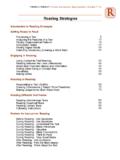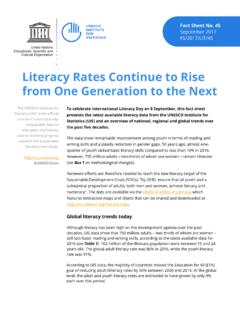Transcription of A practical guide to improving boys’ literacy skills
1 ISBN 0-7794-7014-104-068 Queen s Printer for Ontario, 2004 Printed on recycled paperA practicalguide toimproving boys literacy skillsMe Read?Me Read?No Way!No Way!1 ContentsAbout This guide .. 2 Who the guide is for .. 2 What the guide contains .. 2 How to use this guide .. 2 Why boys ? .. 4 What test scores tell us .. 4 Towards a solution .. 5 What about girls? ..6 Taking gender differences into account in the classroom .. 6 Strategies for Success .. 8 Have the right stuff: Choosing appropriate classroom resources for boys .. 8 Help make it a habit: Providing frequent opportunities to read and write .. 12 Teach with purpose: Understanding boys learning styles .. 15 Embrace the arts: Using the arts to bring literacy to life .. 22 Let them talk: Appealing to boys need for social interaction.
2 26 Find positive role models: Influencing boys attitudes through the use of role models .. 30 Read between the lines: Bringing critical- literacy skills into the classroom .. 33 Keep it real: Making reading and writing relevant to boys .. 37 Get the Net: Using technology to get boys interested in literacy .. 40 Assess for success: Using appropriate assessment tools for boys .. 43Be in their corner: The role of the teacher in boys literacy .. 46 Drive the point home: Engaging parents in boys literacy .. 49 Build a school-wide focus: Building literacy beyond the classroom .. 52 References and Resources for Further Reading .. 55 This publication is available on the Ministry of Education s website, at This GuideThis guide was prepared by the Ontario Ministry of Education as part of an initiative tosupport student success in literacy .
3 In particular, it focuses on boys literacy . Based on an international review of effective practices, the guide is intended to stimulatediscussion of this important issue among educators in Ontario and to provide practical andeffective strategies that teachers across the province can put to use in the classroom, bothimmediately and over the longer term. Who the guide is forThis guide is intended for teachers, principals, and other professionals in the field of education at the elementary or secondary level. It will be of particular interest to those who are developing and delivering literacy the guide containsThis guide offers a rich source of practices and strategies that are being used in successfulliteracy programs for boys around the world and that educators in Ontario can draw on tocreate a stimulating and engaging learning environment for both boys and girls.
4 In this guide ,you will find: supports, information, tips, and ideas conveniently organized into distinct categories; a wide variety of sources that you can refer to for more in-depth exploration of particular concepts or to use this guideThis guide is structured around thirteen Strategies for Success , which are listed in thetable of contents. These strategy sections attempt to distil for educators the most importantresearch on how boys learn to read and write and the most effective instructionalapproaches and strategies for helping boys enjoy learning to read and write well. Wesuggest that you review the list of Strategies for Success in the table of contents topinpoint those areas most relevant to your immediate needs, and read the rest as timepermits and need dictates.
5 The guide is designed for browsing!About This Guide3To make the guide as useful and accessible as possible, the following four categories of infor-mation have been singled out for special treatment. Each section is signalled in the guide bymeans of the icon shown alongside each heading list of references and resources for further reading is provided at the end of the factsBackground information and research findingsTry it now! practical suggestions that you can implement quickly and easilyBest practicesEffective instructional strategies and approaches that you may wish to exploreInsightInsights from the literature about boys literacy development and literacyinstruction for boys4 Why boys ?All educators share the common goal of providing equitable learning opportunities for everystudent in the classroom.
6 Providing equitable opportunities for girls is a familiar topic;providing them for boys is a relatively recent issue, but one that is appearing with increasingurgency on education agendas around the world . An increasing volume of evidence indicates that gender is a significant factor in bothchoice of reading materials and reading achievement for boys and girls. boys typically score lower than girls on standardized tests in the language arts. boys are more likely than girls to be placed in special education programs. boys are less likely than girls to go to university. Dropout rates are higher for boys than for test scores tell usThe following provincial, national, and international assessments have produced results thatecho the findings listed Quality and Accountability Office (EQAO):The results of assessmentsadministered to students in Grades 3 and 6 show that boys do not perform as well as girlsin reading and writing.
7 (The results for mathematics do not show similar gaps.) The resultsof the Ontario Secondary School literacy Test (OSSLT) also show that boys do not performas well as girls in reading and writing. Progress in International Reading literacy Study (PIRLS):The PIRLS assessmentconducted in 2001 revealed that Grade 4 girls performed better than boys in all thirty-fourcountries where the assessment was administered, including Canada, where two Canadianprovinces, Ontario and Quebec, participated in the study. Programme for International Student Assessment (PISA):The results of the PISA assessment conducted in 2000 show that girls performed better than boys on the readingtest in all countries and in all Canadian Achievement Indicators Program (SAIP): In the 2002 SAIP writing assessment,13- and 16-year-old girls across Canada scored higher than boys in the same age boys ?
8 5 The evidence of weaker reading and writing skills among boys provided by these and otherassessments has become an issue of major concern, since poor literacy skills can have a pro-found effect on performance in other subjects, as well as on students success throughouttheir a solutionAddressing the needs of boys effectively will require dialogue and the collective expertiseand talents of all partners in the education process, including government, educators,parents, and community these partners, however, educators play a particularly important role in determininghow individual students develop as readers and writers. It is critical that we provideclassroom experiences that respond to the interests, needs, and learning styles of allstudents, and that we explore ways to engage boys and girls equally as readers and writers.
9 As they get older, boys increasingly describe themselves as non-readers. Fewhave this attitude early in their schooling, but, according to some experts,nearly 50 per cent describe themselves as non-readers by the time they entersecondary t read or don t read?G. Kylene Beers identifies three distinct categories of students who canreadbut don t: the dormant reader: I m too busy right now! the uncommitted reader: I might be a reader, someday. the unmotivated reader: I m never gonna like it! Beers concludes that there is no single template for the aliterate student;rather, there are individuals who have differing views about themselves andabout reading. By understanding these views, we can gain greater insight intowhy some students choose not to read.
10 (Beers, 1996, pp. 31 33) Me Read? No Way!6 What about girls?Although gender is a significant factor, it is not the only factor at play in determiningperformance in reading and writing. In fact, the differences amongboys and amonggirls aregreater than the differences betweenboys and girls. Consequently, educators must becareful not to focus on the gender differences between students, but rather to recognizethat the effectiveness of certain approaches in literacy instruction may be tied to that understanding, teachers will be better able to provide appropriate and equitableopportunities for both boys and the strategies contained in this guide focus on engaging boys in reading and writing, they also represent practices that will enhance the learning environment for both boys and gender differences into account in the classroomMichael Smith and Jeffrey Wilhelm identify the following gender differences related toliteracy that teachers may encounter in their work with individual learners:With respect to achievement.
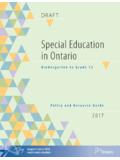
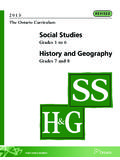
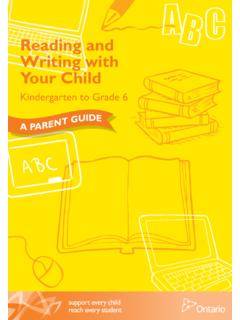
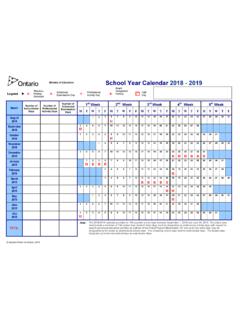
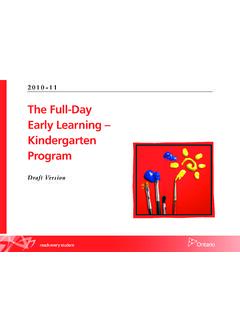
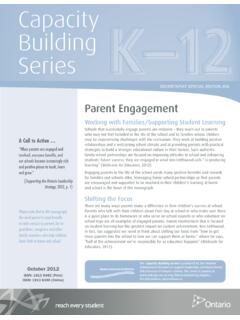
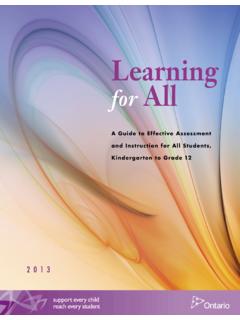
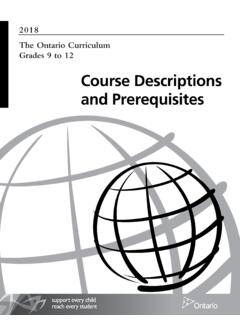
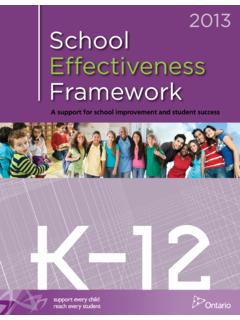
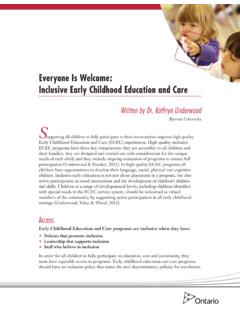

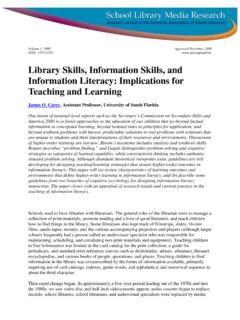
![The Ontario Curriculum, Grades 1-8, Language [revised] 2006](/cache/preview/d/5/3/5/d/c/7/4/thumb-d535dc7439a04910d8a17bf7f1d6b83f.jpg)
